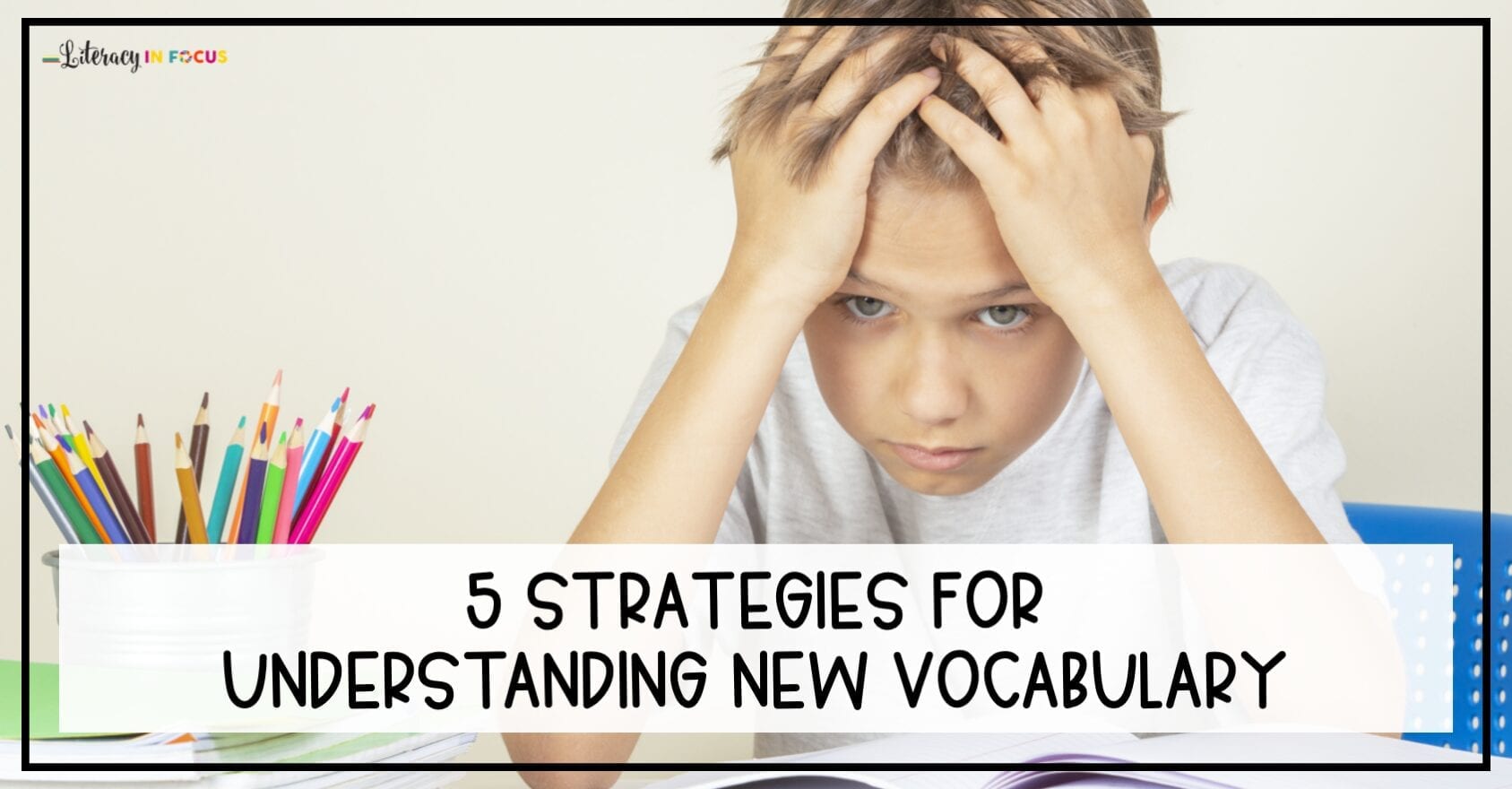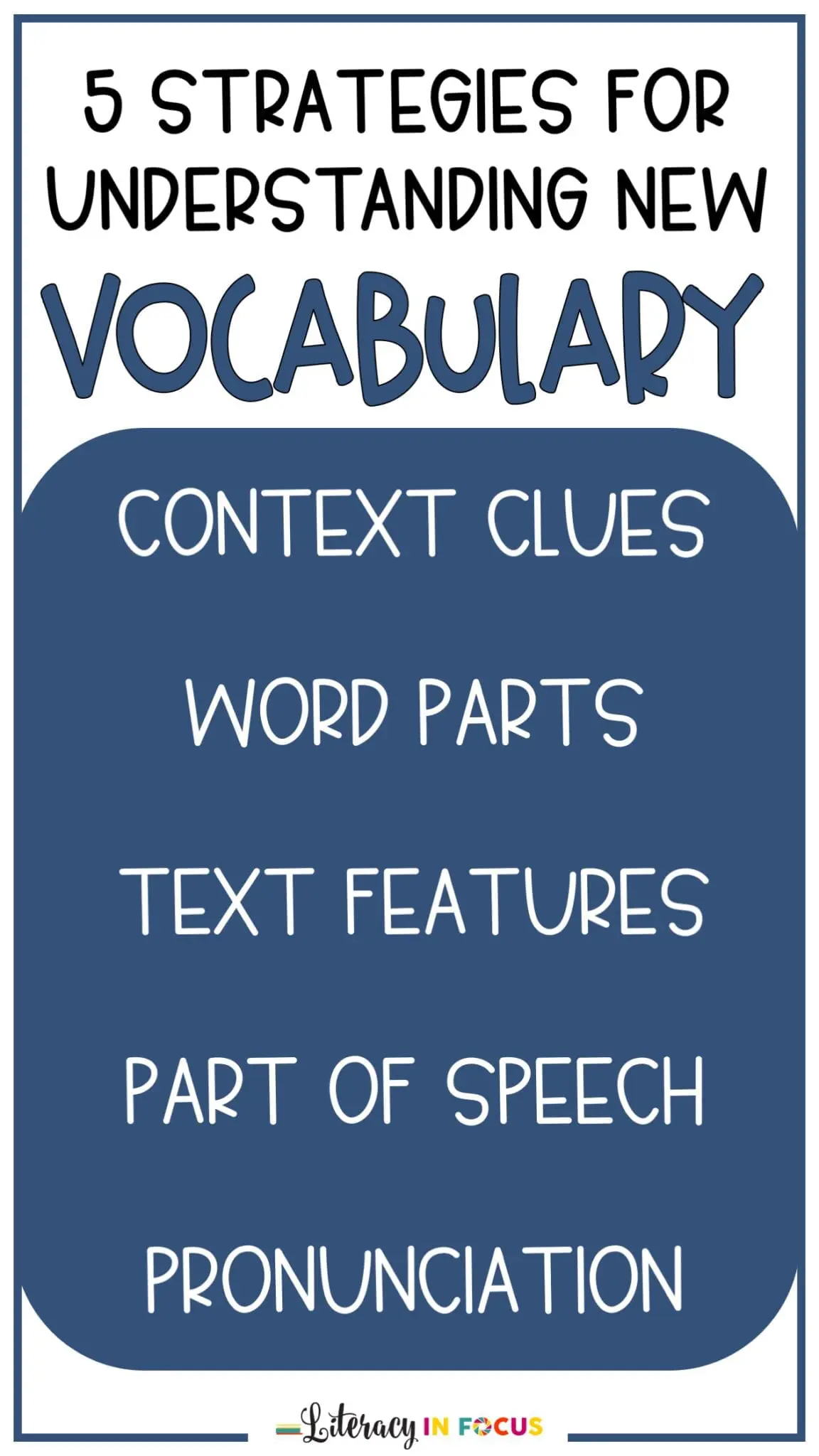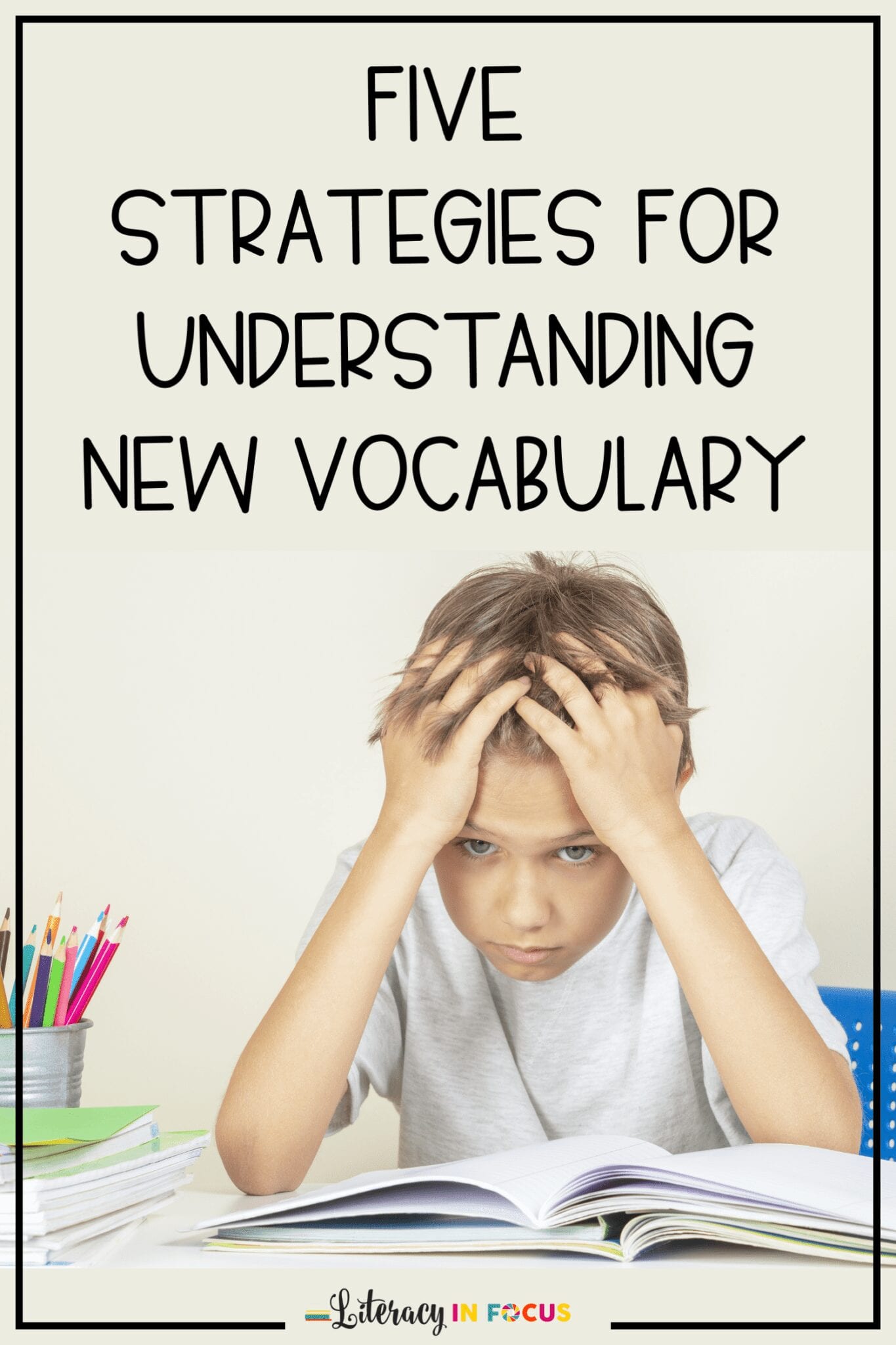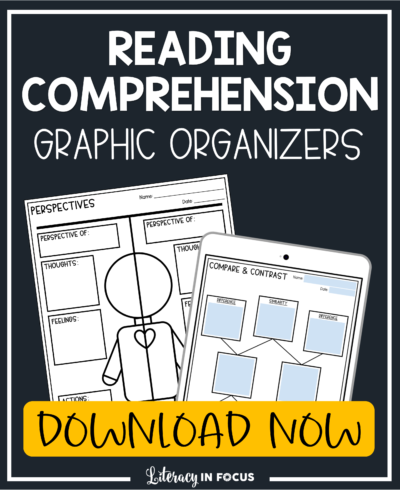
If words are the building blocks of literacy, providing students with the tools necessary for understanding new vocabulary is critical for reading and writing development. As students progress through the grade levels, the volume of tier two and tier three terms increases. The ability to comprehend complex vocabulary is a fundamental component of literacy, especially when referring to new concepts and subject matter. I like to think of the strategies listed below as tools students can utilize when reading independently. With enough practice, the strategies will become an automatic function of independent reading.
Context Clues
Teach students to be word detectives. As texts get more complex, the ability to use context to determine meaning increases in significance. Surrounding words will often provide readers with hints to the meaning and use of the new word. Teaching students a self-questioning strategy and providing frequent examples will support students in recognizing context clues on their own. A list of commonly used context clues is provided below.
1. Definition: word meaning is directly stated
The ancient Romans were the first to use arches and barrel vaults extensively in construction. An arch is a curved structure used for doorways and hallways. (Where is the Colosseum?)
2. Restatement/Synonym: a similarity is provided
Our circus doesn’t migrate. We sit where we are, like an old beast too tired to push on. (The One and Only Ivan)
3. Contrast/Antonym: a difference is provided
Amelia Earhart was a pioneer. This doesn’t mean she traveled west in a covered wagon or lived in a log cabin. It means she had a special spirit. (Who was Amelia Earhart?)
4. Example: word meaning is supported with an example
Stanley’s father was smart and had a lot of perseverance. Once he started on a project, he would work on it for years, often going days without sleep. (Holes)
5. Punctuation: commas, parentheses, and/or dashes are used to set apart word meaning
It was a small plane, a Cessna 406 – a bush plane – and the engine was so loud, so roaring and consuming and loud, that it ruined any chance for a conversation. (Hatchet)
Word Parts
In order to increase reading fluency and comprehension, students need to be equipped with the decoding skills necessary for reading harder and longer words. If students are able to identify the different parts of a word including the root, prefix, and/or suffix, they are more likely to be able to determine the word’s meaning. There are many strategies for teaching roots words, prefixes, and suffixes. Click here to read more about incorporating it into your curriculum. Overall, the ability to decode unfamiliar words plays a big role in becoming a strong independent reader, especially as exposure to content specific information increases over time.
Text Features
Determining the meaning of new words is like solving a mystery. Investigating the surroundings in search of clues is an important part of the process. Understanding and working with the different features of a text is critical for vocabulary development. Text features include all the components of a story or article that are not the main body of text. The following text features are often included to support content and clarify new concepts:
- Headings
- Bold Words
- Side Bars
- Pictures and Captions
- Labeled Diagrams
- Glossary

Part of Speech
What job is the new word performing in the sentence? Understanding the function of each part of speech can help students to decipher the meaning and use of a new word. Identifying the placement of the word in the sentence and its relation to the other words is a great place to start. In order to accurately determine the part of speech, students can ask themselves the following questions:
- Is the word a person, place, or thing?
- Is the word an action?
- Is the word describing another word?
Pronunciation
Many words are spelled in ways that make it challenging to automatically recognize them. Students may be familiar with a word when it is used verbally, but they may not have experience reading that same word in print. Trying different pronunciation tactics may help students recognize words they already know. Breaking the word into syllables, trying different vowel sounds, and identifying digraphs are examples of strategies students can employ to assist with correct pronunciation.
Click here to download Printable and Digital Vocabulary Worksheets for Struggling Readers! Use with ANY text!



